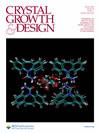Azo Pyrazole Carboxylic Derivatives for Potential Energetic Materials
IF 3.2
2区 化学
Q2 CHEMISTRY, MULTIDISCIPLINARY
引用次数: 0
Abstract
Ideal energetic materials require high densities, favorable thermal stability, high-energetic characteristics, low sensitivity to impact and friction, and safe environmental compatibility. Moreover, in view of the need for large-scale production, the synthesis routes for energetic materials must be as short as possible. In this study, novel low-sensitivity energetic compounds 5,5′-(diazene-1,2-diyl)bis(3-(1H-tetrazol-5-yl)-1H-pyrazole-4-carbonitrile) (4), 1,2-bis(3-carboxy-4-nitro-1H-pyrazol-5-yl)diazene-1-oxide (5), and 5,5′-(diazene-1,2-diyl)bis(3-(1H-tetrazol-5-yl)-1H-pyrazole-4-carboxylic acid) (6) were simply and efficiently synthesized by cycloaddition and nitration reactions. For the sake of exploring their potential as energetic materials, elemental analysis, multinuclear NMR spectroscopy, infrared spectroscopy, and single-crystal X-ray diffraction were applied to investigate the properties of such compounds. The calculated detonation properties of 4−6 (7480−8190 m·s−1) are superior to that of the traditional explosive TNT (6881 m·s−1). In addition, 4−6 have higher decomposition temperatures (Td = 212−260 °C) than RDX (Td = 204 °C). Meanwhile, 5 and 6 also have lower mechanical sensitivities (IS = 40 J, FS > 360 N) than RDX (IS = 7.5 J, FS = 120 N). The results showed that the azo pyrazole carboxylic acid derivatives could be used as low-sensitivity energetic materials.

用于潜在能源材料的偶氮吡唑羧基衍生物
理想的高能材料需要高密度、良好的热稳定性、高能特性、对冲击和摩擦的低敏感性以及安全的环境兼容性。此外,鉴于大规模生产的需要,高能材料的合成路线必须尽可能短。在这项研究中,新型低敏感性高能化合物 5,5′-(重氮-1,2-二基)双(3-(1H-四唑-5-基)-1H-吡唑-4-甲腈) (4)、1,2-双(3-羧基-4-硝基-1H-吡唑-5-基)重氮-1-氧化物 (5)、和 5,5′-(重氮-1,2-二基)双(3-(1H-四唑-5-基)-1H-吡唑-4-羧酸)(6) 通过环化和硝化反应简单高效地合成。为了探索其作为高能材料的潜力,研究人员采用了元素分析、多核核磁共振光谱、红外光谱和单晶 X 射线衍射等方法来研究这些化合物的性质。计算得出的 4-6 爆炸特性(7480-8190 m-s-1)优于传统炸药 TNT(6881 m-s-1)。此外,4-6 的分解温度(Td = 212-260 ℃)高于 RDX(Td = 204 ℃)。同时,5 和 6 的机械灵敏度(IS = 40 J,FS > 360 N)也低于 RDX(IS = 7.5 J,FS = 120 N)。结果表明,偶氮吡唑羧酸衍生物可用作低灵敏度的高能材料。
本文章由计算机程序翻译,如有差异,请以英文原文为准。
求助全文
约1分钟内获得全文
求助全文
来源期刊

Crystal Growth & Design
化学-材料科学:综合
CiteScore
6.30
自引率
10.50%
发文量
650
审稿时长
1.9 months
期刊介绍:
The aim of Crystal Growth & Design is to stimulate crossfertilization of knowledge among scientists and engineers working in the fields of crystal growth, crystal engineering, and the industrial application of crystalline materials.
Crystal Growth & Design publishes theoretical and experimental studies of the physical, chemical, and biological phenomena and processes related to the design, growth, and application of crystalline materials. Synergistic approaches originating from different disciplines and technologies and integrating the fields of crystal growth, crystal engineering, intermolecular interactions, and industrial application are encouraged.
文献相关原料
| 公司名称 | 产品信息 | 采购帮参考价格 |
|---|
 求助内容:
求助内容: 应助结果提醒方式:
应助结果提醒方式:


